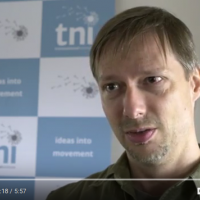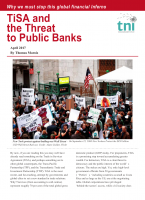How Public Banks Can Help Finance a Green and Just Energy Transformation
Every day public banks are developing new and innovative ways of financing a green transformation. This issue brief explores the lessons from two public banks, one in Costa Rica and the other in Germany.

Authors
The current global context is favourable to raise the potential for public banks to support a green energy transition. Both the 2015 UN Sustainable Development Goals (SDGs) and Paris Agreement on climate change (COP21) stress the need for massive new investments in sustainable infrastructure. The global demand for new infrastructure is estimated to be in the range of US$90 trillion. The World Bank and other international financial institutions have financed relatively little energy efficiency projects (only 14% of their energy portfolio from 2012 to 2014, or 3% of total investments) and private sources of capital are lacking because financiers prefer shorter term, lower risk, and more conventional investments.
How can we increase infrastructure investment and green it?
Public and cooperative banks – owned and controlled by state authorities, by public enterprises or owned collectively under public law – may hold the key to the future of a just global green transformation and energy democracy. They are already doing much in that regard, and there is potential for public banks to do more in the current context:
Mainstream understandings of a ‘well-functioning’ public bank share little with the needs of energy democracy. Such understandings focus on securing higher and more stable returns on investment for private investors with public finance strictly serving to ‘wrap’ private green infrastructure projects in public guarantees that socialize risks.
- 586 public banks spanning the globe;
- with combined resources accounting for a quarter of all banking assets, worth some $35 trillion (equal to 46% of global GDP);
- governments and communities have historically relied on public banks to channel support to development initiatives.
To illustrate how public banks can provide green financing in a public way, this briefing explores two cases:
Costa Rica’s Banco Popular
Is owned by workers and perhaps the most democratic bank in the world; it prioritizes working with coops and public institutions, as well as with people typically excluded from financial services.
- Banco Popular produces annual Sustainability Reports following Global Reporting Initiative guidelines to strategize around reducing its own carbon impact;
- it has facilitated the ‘greening’ of energy cooperative COOPELESCA, by financing the conversion of all lighting to low-energy LED through a low-cost loan and by offering a $2 million-loan at not-for-profit concessional rates to purchase 1,124.7 ha of land in Juan Castro Blanco National Park for water, biodiversity conservation.
Germany’s KfW
Is owned for 80% by the Federal Republic of Germany and for 20% by the German federal states, has developed a strong green lending portfolio.
- In 2016, over €35 billion in new low-interest lending was dedicated to environmental and climate protection projects, with a focus on renewable energy development;
- nearly €750 million went to support the greening of German municipalities, local authorities, municipally owned companies and non-profit organizations via energy-efficient building refurbishment loans – long-term, low interest-rate loans whose terms are sweetened by repayment bonuses linked to the energy efficiencies realized.
These two banks are not perfect, but they do offer important lessons in the struggle to equitably finance a just energy transformation.



